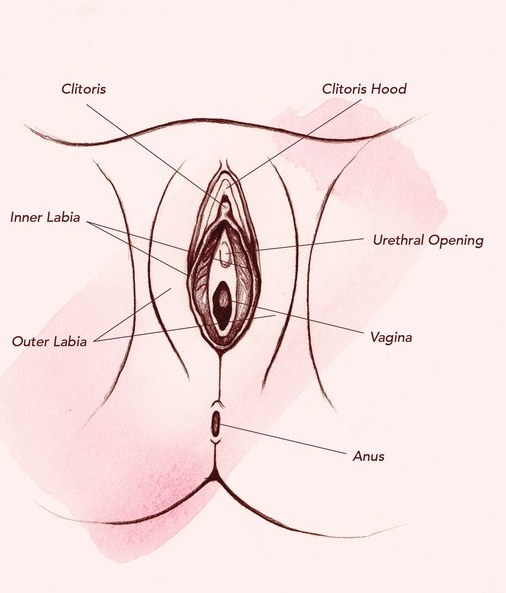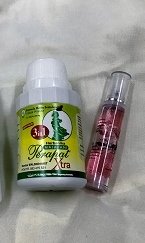The External Vaginal Anatomy
 Diagram of the external vaginal anatomy
Diagram of the external vaginal anatomyWe have done the overview of the vaginal anatomy. Are you ready to join me on our self–exploration of the external vaginal anatomy? Come on, get your trusted hand mirror and let's start!
We will begin with the external and then go on to the internal vaginal anatomy. You can refer to the diagram above and the reflection on your mirror as a guide.
The Components of the External Vaginal Anatomy
Vulva - Most of the time, a woman called her entire genital region as the vagina. In fact, the vagina is only part of the package. The outer portion of a woman's privates is actually the vulva. It includes the:-
- Mons Veneris
- Inner and outer labia
- Clitoris
- Clitorial hood
- Opening to the urethra and vagina
Thus, the vulva is the external sexual organ of a woman. It is this part of the vaginal anatomy we see when we stand in front of the mirror. This entire area is covered with nerve endings which is extremely sensitive to touch and stimulation.
1. Mons Veneris
Hill or Mound of Venus (Venus is the Roman Goddess of Love) is the pad of fatty tissue that lies just above the opening of the vagina. It protects the pubic bone and other delicate organs and bones in the pelvic area from the impact of sexual intercourse.
Usually covered with a thatch of pubic hair, this is the part of the external vaginal anatomy we are most familiar with. The mound of Venus is one of the most erotic part of the body and is highly sensitive to touch.
2. Labia Majora
Outer set of vaginal lips. These are pads of fatty tissue that wrap around the vulva from the Mound of Venus to the perineum. These outer lips are covered with pubic hair and contain sweat and oil glands which provide the characteristic “musky” scent. Simply stroking the outer lips can easily set your sexual desires on fire.
3. Labia Minora
These are the inner pair of lips or the flower. They are thin stretches of elastic tissue within the outer lips. They fold and protect the vagina, urethra and clitoris. The appearance of the inner lips can vary widely among women. This is the part of the vulva which cause women a lot of stress.
It can be tiny lips that hide between the outer lips to large lips that protrude beyond the outer lips. This inner pair of lips might not be symmetrical and the edges are not totally smooth. The healthy thing is to understand that our inner labia are as unique as our fingerprints. Every woman is different. There is no right or wrong about it.
Most of us often think that our vaginal wetness comes from the vagina. In fact most of the lubrication comes from the Bartholin glands that line the walls of both vaginal lips.
4. Clitoris (Slang:"Little Man In A Boat")
It is a small bud-like formation between the inner lips and the clitorial hood. The clitoris is a small body of pink spongy tissue that is highly responsive to sexual stimulation.
During sexual arousal, the clitoris extends and the hood retracts to make the bud more accessible. It becomes engorge with blood, doubles its size and transforms into a firm, erect "button" which is highly sensitive to touch!
Some of us may have small clitoris. While others have larger ones where the clitoral hood does not completely cover.
5. Urethra
The urethra is the opening below the clitoris which is not related to sex or reproduction but for the passage of urine. It is connected to the bladder. As the urethra is close to the anus, always wipe from front to back after pooping. Wiping from back to front runs the risk of introducing bacteria from the anus to the vagina and urethra.
6. Hymen
The hymen is a traditional symbol of “virginity”. It is a thin swatch of membrane that partially covers the vaginal opening. Some women have a thin membrane that is easily torn by vigorous exercise or insertion of a tampon. Others might be born with very thick hymens that need to be surgically removed before they can have intercourse or inserting a tampon.
7. Perineum
The perineum is a short stretch of skin starting at the bottom of the vulva and extending to the anus. It often tears during child birth to allow the passage of the baby.
After knowing these seven parts of the external vaginal anatomy, let us move on to the internal vaginal anatomy.
- Home
- Anatomy of the Vaginal Area
- External Vaginal Anatomy
Like This Page?


Facebook Comments
Thanks for visiting. Have your say on what you just read? Leave a comment in the box below!